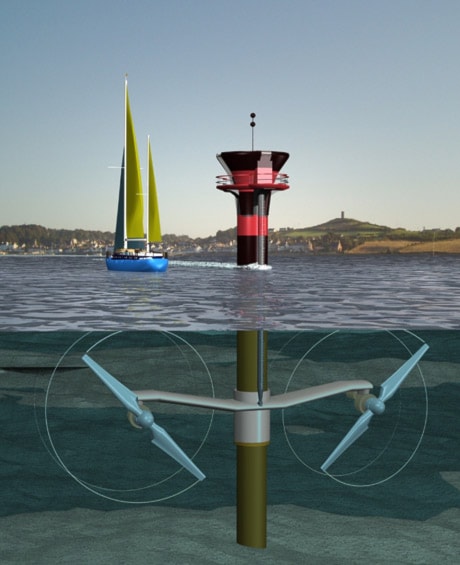HALIFAX — A tidal power turbine up to 10 metres in diameter will be installed in the Bay of Fundy this fall, as companies begin testing methods of harnessing some of the earth’s mightiest water flows.
The Nova Scotia government and the federal Fisheries Department announced environmental approval Tuesday for test projects for three companies to place their turbines in the inner bay, where the world’s highest tides rush in and out each day.
There is one small existing tidal power station at the mouth of the Annapolis River, providing sufficient power for 6,000 homes.
However, the test projects would be the first step towards installing multiple, undersea turbines in the bay, with the goal of eventually creating an array of generators to collect a portion of the tidal energy in the inner bay, along the Minas Passage.
The Nova Scotia Power (TSX:EMA) turbine — which looks somewhat like an underwater jet-engine turbine set on a large tripod — will be the first to go in the waters off Parrsboro, with installation plans set for late October.
That will be followed by the installation of a turbine by Clean Current Power Systems Inc., a British Columbia-based firm.
Scott Travers, the president of Minas Basin Pulp and Power Co. Ltd., said during a speech in Saint John, N.B., that his firm’s turbine is expected to go in the water next summer.
He told the audience, which included the premiers of Canada’s eastern provinces and New England governors, that the potential source of energy is immense in an area where the tides fall so dramatically twice a day that vessels are left perched on the mud.
“The shift of the current, and its predictability, you can bank on it,” he said.
The three companies are spending a total of $60 million to $70 million to build the test system.
Nova Scotia’s Energy Department said the test system will be linked together next year, with the possibility of creating enough energy to power 4,000 homes, or about 3.5 megawatts. Nova Scotia Power said the test system will not be hooked up to province’s electrical grid.
Travers said the tidal projects are currently at the “Kitty Hawk stage” of development, comparing them to the earliest days of flying machines, and it will be several years before commercial scale production is achieved — estimated to be enough power for 100,000 homes.
He said results of the test phase would take one year to 18 months, and at that point proposals could go forward for commercial developments, and a new round of environmental assessments.
Environment Minister Sterling Belliveau said the reduction in greenhouse gases would benefit Nova Scotia, which is heavily dependent on coal-fired generators.
But he said the province could close down the test system quickly if there are signs it is damaging the endangered Atlantic salmon or the lobster fishery.
The studies will also include a look at potential impact on plankton, the microscopic plant life that flows through the bay.
In its July submission to the province’s Environment Department, the Ecology Action Centre said the impact of undersea tidal projects “have been consistently underestimated, and in some cases, ignored.”
A group of inshore fishermen also sent in their concerns to the department, saying plans to eventually put hundreds of turbines in the bay must not proceed.
